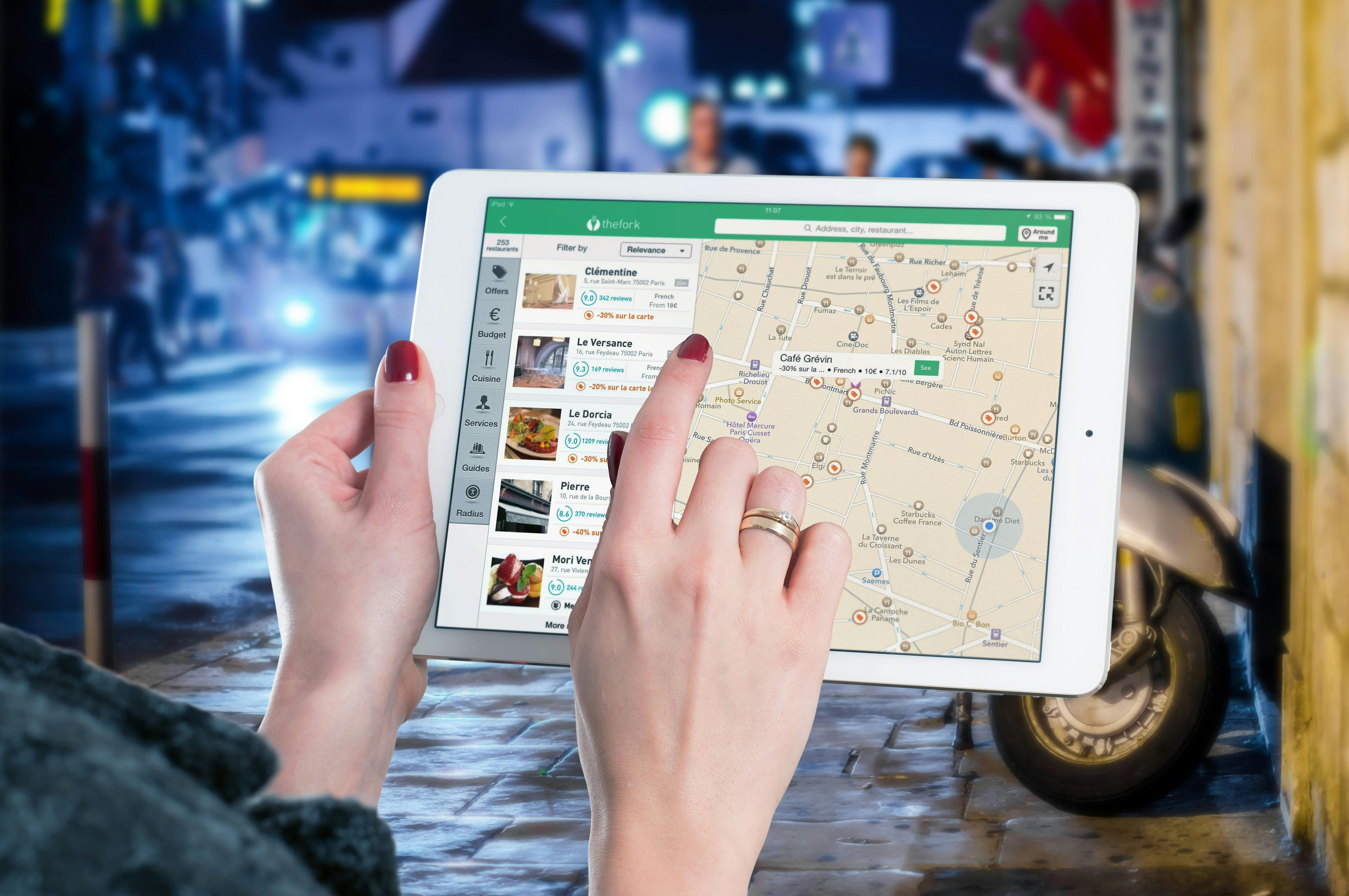Discover the top 50 streaming services of 2024, including Netflix, Disney+, and Amazon Prime Video. Get insights on pricing, features, top shows, and recommendations for every entertainment preference.
22 October, 2024 | Posted by: Pablo Mendoza
Category: Entertainment | No Comments

Overview: The leader in global streaming with a vast catalog of original shows, films, and documentaries.
Top Shows: Stranger Things, The Crown, Wednesday.
Price: $6.99 - $19.99/month.
Overview: Max boasts a premium lineup of content, including HBO Originals like Succession and The White Lotus.
Top Shows: House of the Dragon, The Last of Us, Euphoria.
Price: Starts at $9.99/month.
Overview: The home of Disney, Pixar, Marvel, and Star Wars, with a library of family-friendly and blockbuster hits.
Top Shows: The Mandalorian, Loki, WandaVision.
Price: $7.99 - $10.99/month.
Overview: Known for high-quality originals like Ted Lasso and Severance, Apple TV+ is building a strong portfolio of must-watch content.
Top Shows: Ted Lasso, Foundation, The Morning Show.
Price: $9.99/month.
Overview: Offers a broad mix of original shows, current TV, and films, with a live TV option for cord-cutters.
Top Shows: The Handmaid's Tale, Only Murders in the Building, The Bear.
Price: $7.99/month (basic) or $76/month for Hulu + Live TV.
Overview: A comprehensive streaming platform with original shows, films, and an expansive library, included with Amazon Prime membership.
Top Shows: The Boys, The Marvelous Mrs. Maisel, The Wheel of Time.
Price: $8.99/month or bundled with Amazon Prime at $14.99/month.
Overview: Known for Star Trek and CBS programming, it also includes movies from Paramount Pictures.
Top Shows: Star Trek: Picard, Yellowjackets, 1883.
Price: $5.99/month.
Overview: A great live TV option with cloud DVR capabilities, offering a robust lineup of live channels.
Top Shows: Access to live networks and sports channels.
Price: $73/month.
Overview: Offers NBCUniversal content, including classic shows, new originals, and live sports.
Top Shows: The Office, Yellowstone, Poker Face.
Price: $5.99/month.
Overview: A must-have for sports fans, with live sports, original programming, and exclusive UFC pay-per-view events.
Top Shows: NFL Primetime, 30 for 30.
Price: $11/month or bundled with Disney+ and Hulu for $15/month.
In the digital age, streaming movies seamlessly requires a reliable and fast internet connection. Explore top internet providers for streaming, compare features, and learn tips to optimize your streaming performance for an uninterrupted movie night.
22 October, 2024 | Posted by: Pablo Mendoza
Category: Entertainment, Internet | No Comments

In today's digital world, streaming movies has become a primary source of entertainment for many households. With the increasing popularity of platforms such as Netflix, Hulu, and Disney+, having a reliable and fast internet connection is crucial for an uninterrupted viewing experience. This blog post will guide you through selecting the best internet provider for streaming movies, ensuring you enjoy your favorite films without any buffering or lag.
When it comes to streaming movies, two key factors stand out: internet speed and reliability. These elements are essential for a seamless streaming experience:
Several internet service providers (ISPs) are known for their excellent service tailored to streaming needs. Here are some of the top contenders:
| Provider | Max Speed (Mbps) | Data Caps | Price Range | Special Features |
|---|---|---|---|---|
| Xfinity | 1,200 | Yes | $29.99-$299.95 | Extensive Wi-Fi coverage |
| Verizon Fios | 940 | No | $39.99-$89.99 | 100% fiber-optic network |
| AT&T Fiber | 5,000 | No | $55-$180 | High-speed fiber plans |
| Spectrum | 1,000 | No | $49.99-$109.99 | No data caps |
Even with the best internet provider, there are ways to enhance your streaming experience:
Choosing the best internet provider for streaming movies depends on your specific needs and location. However, based on speed, reliability, and customer satisfaction, Verizon Fios and AT&T Fiber are excellent choices for those seeking top-tier streaming performance. Xfinity and Spectrum also offer competitive plans with widespread availability, making them suitable for various households.
For more insights on streaming and internet providers, check out our related articles on streaming tips and technology trends. Additionally, external resources like PCMag's best streaming ISPs and online streaming forums can provide further guidance and user reviews.
By understanding your streaming needs and comparing the offerings of different Internet Service Providers, you can make an informed decision that ensures a fantastic movie-watching experience.
To learn more about streaming services and the best internet, explore our related articles:
Deadpool is a unique blend of humor, action, and irreverence that sets it apart from other superhero films. With the new movie on the horizon, fans can look forward to more laughs, epic battles, and the unexpected. Whether you’re a longtime fan or new to the franchise, Deadpool promises to deliver a wild ride.
16 November, 2024 | Posted by: Pablo Mendoza
Category: Entertainment | No Comments

Deadpool, the anti-hero we all love, is back and more outrageous than ever. Known for breaking the fourth wall and delivering gut-busting humor, Deadpool has redefined what a superhero movie can be. Let's dive into the hilarity, chaos, and the upcoming adventures of everyone's favorite mercenary.
The first Deadpool movie, released in 2016, was a breath of fresh air in the superhero genre. Ryan Reynolds brought the character to life with his perfect blend of sarcasm, wit, and action. The film's R-rated humor, combined with over-the-top violence, made it an instant hit.
In 2018, Deadpool 2 hit theaters, bringing even more laughs and jaw-dropping action. This sequel introduced new characters like Cable and Domino, expanding Deadpool's universe. The film didn't shy away from making fun of itself, other superhero movies, and even Ryan Reynolds.
The excitement is building for the upcoming Deadpool movie. While details are still under wraps, we can expect more of Deadpool's trademark humor, epic fight scenes, and unexpected cameos.
Deadpool's appeal lies in his irreverence. He’s a superhero who doesn't take himself too seriously, making him relatable and entertaining. His constant quips, self-awareness, and knack for getting into (and out of) trouble keep audiences coming back for more.
Deadpool's humor is a mix of dark comedy, slapstick, and clever banter. Whether he's making fun of other superheroes, pop culture, or himself, Deadpool always hits the mark. His interactions with other characters, especially the serious ones like Colossus, provide endless laughs.
Don’t let the humor fool you; Deadpool delivers top-notch action. The fight scenes are well-choreographed, and the use of Deadpool’s regenerative abilities adds a unique twist. Expect more creative and over-the-top action sequences in the upcoming movie.
Deadpool is a unique blend of humor, action, and irreverence that sets it apart from other superhero films. With the new movie on the horizon, fans can look forward to more laughs, epic battles, and the unexpected. Whether you’re a longtime fan or new to the franchise, Deadpool promises to deliver a wild ride.
For more detailed information, visit the full blog post on Konecteaze.
Navigate San Antonio's internet landscape with our guide to top providers. Discover the best options for speed and reliability across the city's unique neighborhoods, ensuring seamless connectivity whether you're in the bustling Downtown or the historic Tobin Hill.
30 October, 2024 | Posted by: Pablo Mendoza
Category: Entertainment | No Comments

When it comes to internet services, San Antonio offers a variety of options to suit different needs and budgets. Here's an expanded look at the major providers and what they offer, along with some interesting facts about the areas where these services are available.
Spectrum is a popular choice for high-speed internet in San Antonio. With a wide coverage area, Spectrum offers plans with speeds up to 940 Mbps, making it suitable for both personal and business use.
| Plan | Price | Speed |
|---|---|---|
| Internet Ultra | $69.99/month | 400 Mbps |
| Internet Gig | $109.99/month | 940 Mbps |
AT&T provides both fiber and DSL internet options in San Antonio. Their fiber plans offer speeds up to 1 Gbps, ideal for heavy streaming, gaming, and large households.
| Plan | Price | Speed |
|---|---|---|
| Internet 100 | $45/month | 100 Mbps |
| Internet 1000 | $60/month | 1000 Mbps |
Google Fiber has made its mark in San Antonio, offering super-fast internet speeds of up to 2 Gbps. Although their service is expanding, it’s currently available in select neighborhoods.
| Plan | Price | Speed |
|---|---|---|
| Fiber 1 Gig | $70/month | 1000 Mbps |
| Fiber 2 Gig | $100/month | 2000 Mbps |
For those in more remote parts of San Antonio, satellite internet providers like Viasat and HughesNet offer reliable services. These options are especially useful in areas where cable and fiber options are limited. Satellite internet ensures you stay connected no matter where you are in the city.
| Provider | Plan | Price | Speed |
|---|---|---|---|
| Viasat | Unlimited Bronze | $50/month | 12 Mbps |
| HughesNet | 20 GB Plan | $69.99/month | 25 Mbps |
San Antonio’s diverse neighborhoods each offer unique experiences and top-notch internet services. Here’s a deeper dive into some of these areas:
San Antonio’s diverse neighborhoods each offer something unique, from the artsy vibe of Southtown to the historic charm of Tobin Hill and the modern luxury of the Pearl District. With top-tier internet services available across the city, residents can enjoy seamless connectivity no matter where they live. Whether you’re exploring the city’s rich history, indulging in its culinary delights, or simply enjoying the local culture, San Antonio has something for everyone.San Antonio’s diverse neighborhoods each offer something unique, from the artsy vibe of Southtown to the historic charm of Tobin Hill and the modern luxury of the Pearl District. With top-tier internet services available across the city, residents can enjoy seamless connectivity no matter where they live. Whether you’re exploring the city’s rich history, indulging in its culinary delights, or simply enjoying the local culture, San Antonio has something for everyone.
Discover the best internet cafes in San Antonio, where you can enjoy top-notch coffee, reliable Wi-Fi, and vibrant neighborhood vibes. From the artsy Southtown to the historic Pearl District, explore ideal spots for remote work or relaxation.
31 October, 2024 | Posted by: Pablo Mendoza
Category: Entertainment | No Comments

In today’s fast-paced digital world, finding a good internet cafe can be a game-changer. Whether you’re working remotely, studying, or just need a break with a good cup of coffee, San Antonio has some great spots to connect. Let’s dive deeper into some of the best internet cafes in the city, exploring not just their offerings but also the vibrant neighborhoods they are situated in.
Halcyon Southtown is more than just an internet cafe; it’s a social hub. Located in the Blue Star Arts Complex, Halcyon offers a cozy atmosphere with free Wi-Fi, great coffee, and delicious snacks. It's perfect for remote work or catching up with friends.
Rosella Coffee Company, located near the Pearl District, combines a hip vibe with a productive environment. With ample seating, reliable Wi-Fi, and excellent coffee, it’s a favorite among students and professionals alike. They also offer a range of food options, making it easy to stay fueled throughout the day.
Nestled in the Tobin Hill neighborhood, Estate Coffee Company is known for its artisanal coffee and welcoming atmosphere. The cafe offers free Wi-Fi, plenty of seating, and a selection of pastries and snacks. It’s an ideal spot for those looking to work in a calm and inspiring setting.
Beyond the top three, here are a few more notable internet cafes in San Antonio:
Located in the Lone Star District, this cafe is housed in a historic building and offers a unique ambiance with its rustic decor. The Lone Star District is an emerging area known for its craft breweries and art studios.
With multiple locations across San Antonio, CommonWealth is known for its French-inspired pastries and cozy atmosphere. Their Alamo Heights location is particularly charming, nestled in a residential area with beautiful tree-lined streets.
Found in the Beacon Hill neighborhood, Press Coffee is a cozy spot with a laid-back vibe. Beacon Hill is one of San Antonio’s oldest neighborhoods, featuring charming bungalows and a strong sense of community.
In each of these vibrant neighborhoods, staying connected is crucial. Here’s a look at the internet providers available and their offerings:
| Provider | Plan | Price | Speed |
|---|---|---|---|
| AT&T Fiber | Internet 1000 | $60/month | 1000 Mbps |
| Spectrum | Internet Ultra | $69.99/month | 400 Mbps |
| Google Fiber | 2 Gig | $100/month | 2000 Mbps |
San Antonio’s diverse neighborhoods each offer something unique, from the artsy vibe of Southtown to the historic charm of Tobin Hill and the modern luxury of the Pearl District. These internet cafes provide the perfect spots to work, relax, and enjoy the city’s vibrant culture. With top-tier internet services available, you can stay connected and productive no matter where you choose to settle down with your laptop and a cup of coffee.